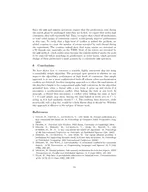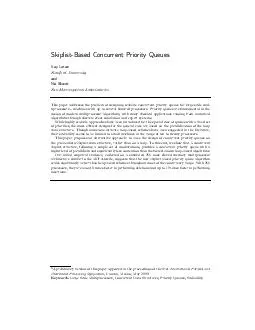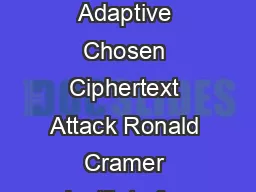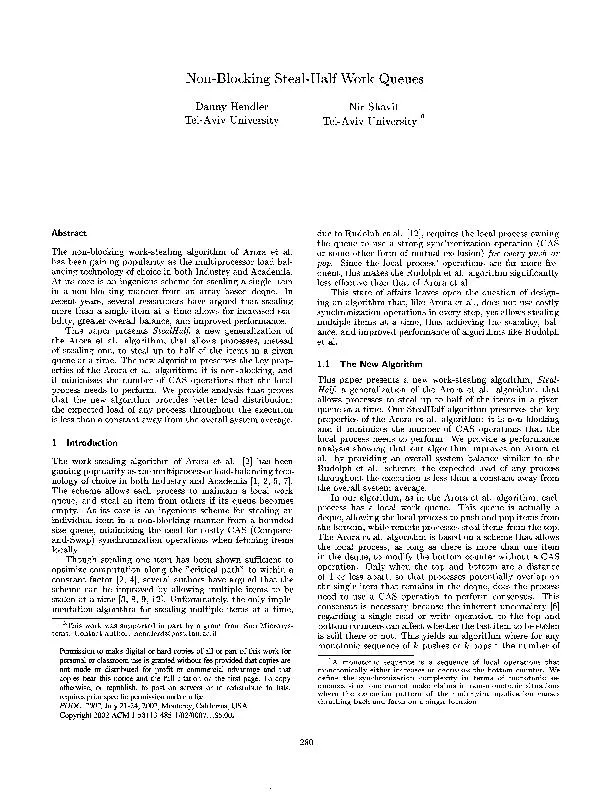PDF-A Provably Correct Scalable Concurrent Skip List Maurice Herlihy Yossi Lev Victor Luchangco
Author : pasty-toler | Published Date : 2014-12-13
We propose a new concurrent skip list algorithm distinguish ed by a combination of simplicity and scalability The algorit hm employs optimistic synchronization searching
Presentation Embed Code
Download Presentation
Download Presentation The PPT/PDF document "A Provably Correct Scalable Concurrent S..." is the property of its rightful owner. Permission is granted to download and print the materials on this website for personal, non-commercial use only, and to display it on your personal computer provided you do not modify the materials and that you retain all copyright notices contained in the materials. By downloading content from our website, you accept the terms of this agreement.
A Provably Correct Scalable Concurrent Skip List Maurice Herlihy Yossi Lev Victor Luchangco: Transcript
Download Rules Of Document
"A Provably Correct Scalable Concurrent Skip List Maurice Herlihy Yossi Lev Victor Luchangco"The content belongs to its owner. You may download and print it for personal use, without modification, and keep all copyright notices. By downloading, you agree to these terms.
Related Documents














